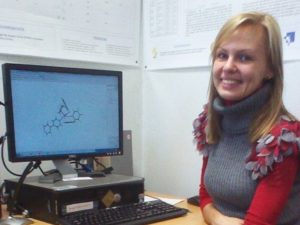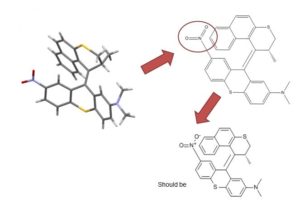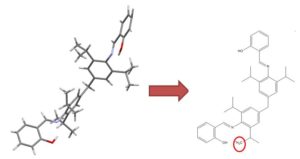
How can you learn about chemistry data trends and best practices happening right now? Elevate your knowledge for future success with leading experts in our three-part webinar series.
The webinar series will focus on how data is enabling research – the current challenges and examples and how a better future can be created using chemistry data. It will showcase current and planned initiatives to develop standards and tools, research infrastructures, and developing cultures to support Findable Accessible Interoperable Reusable (FAIR) chemistry data preparation, publication and reuse.
Elevate your data practices
Created as a free, three-part series for chemical scientists working with data, learn more about chemistry data today, what the future holds, and the current challenges and opportunities of digital chemistry data. Make the most of this opportunity to discover insights from the experts in the field – register for all three webinars.
Recordings of all webinars are available here
Webinar 1: Where are we with digital chemistry data?
Held on 17 October 2023.
Speakers

“Wanted – standard notation for reusable chemistry data” SLIDES
Leah McEwen
Chemistry Librarian, Cornell University

Kevin Jablonka
Research Group Leader, University of Jena

Pierre Morieux
Chemistry Product Marketing Manager, Revvity Signals
Webinar 2: What does the future hold?
Held on 17 November 2023
Speakers

“Data explosion in chemistry: what are we going to do with all the data, and what will it do to us?” SLIDES
Lynn Kamerlin
Professor and Georgia Research Alliance Vasser Woolley Chair in Molecular Design, Georgia Tech

“Will an AI win a chemistry Nobel Prize and replace us?” SLIDES
Simon Coles
Professor of Structural Chemistry, University of Southampton


“Data sharing at the RSC” SLIDES
May Copsey
Executive Editor, Chemical Science, RSC
Anna Rulka
Executive Editor, Digital Discovery, RSC
Webinar 3: Challenges and opportunities
7 December 2023
Speakers

“How to initiate the cultural change towards digital chemistry” SLIDES
Sonja Herres-Pawlis
Chair of Bioinorganic Chemistry, RWTH Aachen

“How can we combat heterogeneous, unfair and disparate data in digital chemistry?” SLIDES
Samantha Kanza
Senior Enterprise Fellow, University of Southampton
Pathfinder Lead, Physical Sciences Data Infrastructure (PSDI)

“How data journals can support (chemistry) data sharing and discovery” SLIDES
Guy Jones
Chief Editor of Scientific Data, Springer Nature
Sponsored by Revvity
Revvity Signals Software, formerly PerkinElmer Informatics, has over three decades of experience providing support for scientific workflows.

Our powerful informatics solutions are used in R&D across disciplines from drug discovery to materials development. Now under our Signals Research Suite, our end-to-end SaaS solution integrates workflows to accelerate innovation and help scientists collaborate. In addition, our solution powered by TIBCO® Spotfire® can transform clinical trials.
From our flagship ChemDraw® and E-Notebook applications, to our Signals Research Suite, to our TIBCO® Spotfire® partnership for data analytics, Revvity Signals offers a powerful suite of scientific solutions.
Supported by







About ChemSpider
Explore more than 128 million structures on the ChemSpider database. Including over 200 data sources, ChemSpider is a valuable source of information for chemical scientists working with data.
Freely accessible and comprehensive, this rich source of structure-based chemistry information is a fundamental resource for chemical scientists working with data everywhere.
Learn more about ChemSpider



































